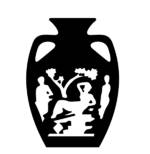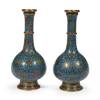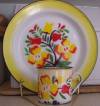Understanding the Value of Antique Preservation:
Antique items serve as tangible connections to the past, offering insights into bygone eras and the people who lived during those times. Preserving these artifacts is a way to ensure that their historical and cultural importance endures, allowing future generations to appreciate the artistry and craftsmanship of earlier periods.
Common Restoration Techniques for Different Types of Antiques:
- Furniture: Restoring antique furniture often involves repairing scratches, dents, and structural issues. Techniques may include wood refinishing, joint regluing, and upholstery repair to bring back the original beauty of the piece.
- Ceramics and Pottery: Repairing antique ceramics and pottery requires delicate handling to mend cracks, chips, and glaze imperfections. Epoxy resin, color-matching, and kiln firing techniques are commonly used to restore these fragile items.
- Textiles: Antique textiles, such as tapestries and clothing, demand gentle cleaning, tear mending, and stain removal methods to preserve the fabric's integrity. Conservationists may employ stitching, patching, and specialized cleaning processes to revive these historical textiles.
- Metalwork: Restoring antique metalwork involves techniques like polishing, rust removal, and patina preservation. Metal restorers carefully clean, repair, and refinish antique metal pieces to maintain their original luster and craftsmanship.

Guidelines for Restoring Antique Pieces:
- Assessment: Before initiating restoration work, a thorough assessment of the antique item's condition is essential. Understanding the extent of damage and identifying any original components versus later additions guides the restoration process.
- Consultation: For valuable or intricate restoration projects, seeking advice from professional restorers or conservators is recommended. Their expertise ensures that the antique piece receives the appropriate care and attention it deserves.
- Conservation vs. Restoration: Distinguishing between conservation (preserving the original state) and restoration (repairing damage) is crucial. Knowing when to conserve and when to restore helps maintain the authenticity and value of the antique item.
Maintaining Authenticity and Value:
- Documentation: Documenting the restoration process is vital for transparency and historical record-keeping. Before-and-after photos, detailed notes on techniques applied, and any alterations made should be recorded to track the item's restoration journey.
- Materials: Using historically accurate materials and techniques in antique restoration is paramount to preserving the item's authenticity. Matching materials to the era in which the antique was created ensures that the restored piece remains true to its original form.
- Patina: The patina, or aged appearance, of antique items holds intrinsic value as a testament to their history. Preserving the patina during restoration honors the item's journey through time and enhances its aesthetic appeal.
Tips for DIY Antique Restoration:
- Start Small: Beginners are advised to practice restoration techniques on less valuable items to hone their skills before working on prized antiques.
- Research: Thoroughly researching restoration techniques and materials specific to the type of antique being restored is crucial. Understanding the best practices for each material and era ensures that the restoration process is carried out effectively.
- Patience: Antique restoration requires patience and meticulous attention to detail. Rushing through the process can result in irreversible damage to the item. Taking the time to methodically restore each element preserves the integrity and beauty of the antique piece.
Preserving the past through antique restoration is a labor of love that honors the craftsmanship and history encapsulated in these cherished artifacts. By understanding the value of antique preservation, familiarizing oneself with common restoration techniques, and following guidelines to maintain authenticity and value, individuals can embark on a journey to revive and safeguard the treasures of yesteryears. Whether undertaking DIY projects or seeking professional assistance, the commitment to preserving antique items ensures that their legacy endures for future generations to appreciate and cherish.







